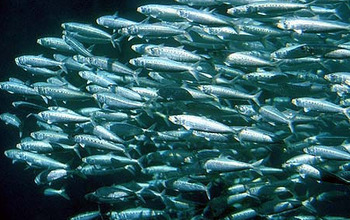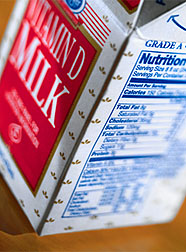All about the amazing wonder food, kale. Includes nutrition information, salad and dinner cooking recipe information, and the recipe for kale tea.
 |
| Typical kale leaves at the grocery store for making and drinking kale tea |
This page is about kale; including nutrition and diet information (especially concerning lutein, zeaxanthin, AMD) and an extremely easy recipe for kale tea. If you are here just for the kale tea recipe, simply scroll to the green teacup marker at around the middle of the page. Do peruse the digestion and health notes.
What Is Kale and Availability – The Basics
Kale is a dark, green, leafy vegetable from the cabbage family; other examples being cauliflower, Brussels sprouts, broccoli, etc. However, kale can also be regarded as a lettuce for the purposes of most salad recipes.Kale is one of the foods which is often included in what might be called the super food or wonder food category. The nutritional content and the benefits derived therefrom makes this a food one wants as part of their regular diet.
In addition to it's nutritional value, there is growing evidence kale actually inhibits and can even fight some diseases; most notable of these being macular degeneration, cataracts, and some forms of cancer.
Store Availability and Forms
Any competent grocery store will have it. You can buy kale fresh and whole in the produce section. Or, if your store is doing their job right, you can buy it already in pieces, shredded, sliced, diced, minced, etc.For a food so rich in nutritional value and benefits, the price is amazingly low. If the price isn't low, find another store.
Kale Benefits and Nutrition Data
Percentages and amounts (in milligrams) are based on a 2,000-calorie diet and 3.3 oz. kale servings. "~" is the mathematical symbol used to identify a number as an approximation.- Lutein and Zeaxanthin: ~600%. These are the two nutrients that have made kale famous. The body of evidence continues to mount that lutein and zeaxanthin actually inhibits and/or wards off macular degeneration. There is even some evidence lutein and zeaxanthin can reverse macular degeneration to some extent. Kale is the number one food source for lutein. Spinach is usually recognized as coming in second. You can buy lutein in pill form, but the FDA states they have not confirmed the quantity or quality of lutein in these products. The generally accepted daily dosage for lutein is 6 mg. The average American diet falls woefully short of this amount. A 3.3 oz. serving of kale has ~37 mg of lutein and zeaxanthin.
- Beta Carotene: ~7 mg. An antioxidant, precursor that converts to vitamin A. Antioxidants are generally believed to help prevent certain kinds of cancer. Vitamin C helps the body deal with stress.
- Potassium: 420 mg. 12%
- Calcium: 15%
- Iron: 8%
- Vitamin K: 950%
- Vitamin A: 290%
- Vitamin C: 190%
- Thiamine (Vitamin B1): 6%
- Riboflavin (Vitamin B2): 8%
- Niacin (Vitamin B3): 4%
- Vitamin B6: 15%
- Folate aka Folic Acid (Vitamin B9): 6%
- Phosphorus: 6%
- Magnesium: 8%
- Copper: 15%
- Manganese: 35%
Kale Recipe Basics
Kale requires a little more chewing effort than the other cabbage-category items or lettuce. It also has a tendency to make a person feel full sooner than usual. One might want to adjust portions accordingly, particularly as to salads.Salad Recipes
 |
| Kale Salad Recipes |
By the simple process of adding kale to the other ingredients, pretty much any salad recipe is also a kale recipe. The only decision is how much kale to include. The more kale included, the more the kale taste and other effects are emphasized. Only you can decide how much is enough and how much is too much.
Vegetable, Stews Casseroles, Chili Recipes
 |
| Kale Hot Meal Recipes |
A Surprising Note About Cooked Kale
Cooking kale almost doubles the amount of lutein metabolized. This has to do with the heating process unlocking certain components of the kale molecular structure, releasing lutein which would otherwise not be available for the digestive system. It should be mentioned that cooking/boiling/heating usually degrades the nutritional value of most food. The kale-lutein molecular structure is unusual in this respect.Virtually all casserole, stew, hot vegetable, and chili recipes can include the addition of kale. However, with these dishes, the determining factor is how much kale do you wish to include with the existing recipe ingredients.
If the objective is one of nutrition only, then one would add only so much kale. If, however, the objective is creating a true kale casserole or true kale hot vegetable dish or stew, or chili concoction; then you would add enough to result in making kale the predominant taste. It is a matter of degree only you can decide.
In whatever case, this is where the sliced/diced/minced/max-shredded form is used. Stems and full leaves are not recommended.
The Easy Kale Tea Recipe
and a Digestion Note and Health Warning
 |
| Kale Tea Recipe |
Do you want the nutrition, but don't want to deal with the recipes and cooking? Many people just drink kale tea.
Kale tea is not difficult to make, though do note the health and digestion warnings that follow.
- Put 2, 3 or 4 medium-to-large pieces of kale in a microwaveable cup, depending on cup size. If you are a first-timer, probably best to start with just two pieces.
- Fill to three-fourths full of water; push the pieces under water if need be.
- Microwave for 4:44 minutes:seconds (your microwave results may vary). In fact, keep an eye on it; it may over-boil; also, the kale may expand and need to be tamped back down during the process.
- Be careful when removing from microwave. The cup will be hot, including the handle.
- Tamp down again.
- Optionally add water as needed.
- Stir it. Let cool. Stir again.
- Remove the pieces of kale.
- You have your kale tea. And it's perfectly fine to drink any remaining, tiny pieces which may happen to be floating around; after all, it's kale.
- Stuff the bottom third of a microwaveable cup full of kale.
- Fill to three-fourths full of water; push the leaves under the water if need be.
- Microwave for 4:44 minutes:seconds (your microwave results may vary).
- Maybe add some water.
- Stir it. Let cool. Stir again.
- Doesn't bother to remove any of the kale.
- Drinks all the liquid.
- Empties cup of the remaining kale into trash or refills cup a little over half-full of water, microwaves for another 3:33 minutes:seconds, drinks second cup of weaker tea.
- Boiling the water on the stove.
- Pouring the water into your prepared cup.
- Letting the leaves sit awhile and stir.
- Etc.
Kale Health and Digestion Notes
Keeping in mind the high concentrations of nutrients, don't go overboard. Drink no more than one cup the first time or so. See how your digestion handles it. Do it when you plan on being home for the next few hours.This is also a good time to mention that too much vitamin A, vitamin C, potassium, and certain other vitamins and minerals on a regular basis, can actually be deleterious to one's health. On the other hand, even just one ounce of kale is a lot of kale; so you don't have that much to worry about. One full ounce of kale is about a third of the above specified nutritional percentages. Just keep in mind what other foods and liquids you are regularly consuming.
What with kale tea being so packed with vitamins and minerals, it can be used to occasionally replace a meal in weight loss programs. Kale tea is also an effective appetite suppressant. For that matter, it would be perfect for use in the infamous Military Diet.
- End of Article -
Re: Using Mobile?
Home: site intro and featured articles/resources.
View Web Version: displays Main Menu article categories (will be located below), additional site info (below and side), search function, translation function.
Home: site intro and featured articles/resources.
View Web Version: displays Main Menu article categories (will be located below), additional site info (below and side), search function, translation function.







